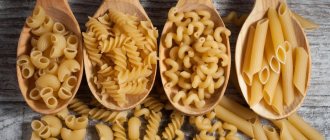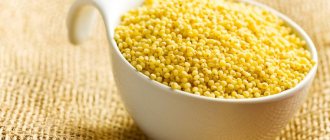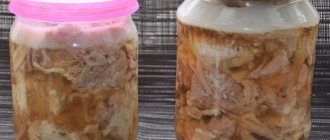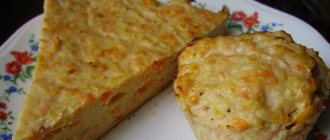Chicken is considered one of the key products of any dietary menu. This is such a versatile product that it can be used in various roles: as a self-sufficient dish that requires only a light side dish, as a source of protein in soup or as a hearty salad ingredient.
The calorie content of chicken will vary greatly depending on different cooking methods. The nutritional value also depends on whether you choose chicken hearts for lunch or whether you choose a leg or other part of the body. Let’s sort everything out piece by piece in the article.
Raw Chicken in other servings:
172
1.72
| Qty | A portion | Calories | In the counter |
| 100 g | 172 | ||
| 1 g | 1.72 | ||
| 49 | 1 ounce = 28.35g | 49 | |
| 1978 | 1 package = 1150g | 1978 | |
| 318 | 1 piece = 185g | 318 | |
| 169 | 1 PC. (from 500 g cooked chicken) = 98.18 g | 169 |
Daily consumption of poultry meat
Chicken meat is much more nutritious than, for example, beef. It is recommended for those who want to normalize weight. However, for good functioning of the body, one should include in the diet not only poultry, but also rabbit and pork meat.
Experts do not recommend eating more than 210-220 g per day. This is the optimal amount for an adult who is interested in sports or spends a lot of time doing physical labor.
For children under 3 years old, 75 g of chicken per day is enough. Boys and girls aged 4 to 7 years can eat up to 100-120 g of product. The same amount is suitable for an elderly person.
“Raw chicken” - in more detail:
- Raw chicken breast
- Raw chicken breast fillet
- Raw boneless chicken breast
- Raw chicken breast fillet
- Raw boneless chicken breast
How to cook chicken correctly
Due to the fact that the calorie content of chicken fillet is minimal, it is used in all kinds of diets. However, combining it with other products is not prohibited. In addition, other parts of the bird can be eaten. When using legs or chicken breast, after rinsing, place them in a pan of water and bring to a boil. It is recommended that after 5 minutes of cooking, drain the water, pour cold clean water over the meat, and only then continue cooking it. As a result of these actions, you will be able to get rid of hormones and antibiotics if they were used in raising poultry. After this, the meat should be salted and cooked until tender, then cut into small pieces. An excellent addition to boiled chicken, including in the diet menu, would be rice, washed and boiled in salted water.
Related Products
Chicken Breast (184 cal) Steamed Chicken (175 cal) Cooked Chicken (237 cal) Chicken Breast (150 cal) Boiled Chicken (215 cal) Chicken Leg (233 cal) Chicken Wings (241 cal) White chicken meat (188 kcal.) Chicken fillet (150 kcal.) Skinless chicken (150 kcal.) Chicken cutlet (290 kcal.) Chicken steak (239 kcal.) Grilled chicken (193 kcal.) Chicken meat (181 kcal.) ) Fried Chicken (284 cal) Rotisserie Chicken (150 cal) Chicken Thigh (226 cal) Whole Fried Chicken (227 cal) Baked Chicken (150 cal) Lean Chicken (143 cal) Skin-On Chicken (234 cal) Sautéed Chicken (217 cal) Chicken Skin (423 cal) Canned Chicken (155 cal) Chicken Gizzard (154 cal) Minced Chicken (189 cal) Chicken Heart (185 cal) Chicken Liver (170 cal) Stewed Chicken (210 cal) Chicken Giblets (191 cal) Chicken Leg (188 cal) Whole Chicken (239 cal)
The benefits of dietary chicken
Nutritionists highly value chicken meat not only for its low calorie content, but also for a number of beneficial properties.
- It contains vitamins of groups A, B, C and PP. In addition, it contains an organic compound such as choline, which is responsible for normalizing the functioning of the adrenal glands and kidneys. It also helps cleanse the liver of fat.
- The high content of the amino acid tryptophan is especially beneficial for a person during a diet, as it increases the level of serotonin in the brain, which reduces stress and improves mood.
- Chicken also contains microelements such as iron, copper, sodium, calcium, phosphorus, selenium, magnesium, potassium, zinc, manganese. Phosphorus normalizes the functioning of the central nervous system, kidneys and liver, and also improves the condition of bones and teeth. Selenium stimulates an increase in metabolic rate.
- An abundance of B vitamins improves vision and skin condition, and also prevents osteoporosis and arthritis.
- Moreover, regular consumption of lean chicken in the diet is indicated for people suffering from a number of ailments, such as diabetes, peptic ulcers, polyarthritis, hypertension, vascular atherosclerosis, heart attacks, strokes, gout. In this sense, eating white chicken breast meat is especially useful, as it can normalize blood pressure and relieve swelling.
- In addition, for colds, many medical experts recommend that patients eat chicken broth.
It is not surprising that, given the number of beneficial properties that have a beneficial effect on human health, chicken meat is recommended for consumption when losing weight.

But in order for chicken dishes to become truly dietary, you need to follow a few simple rules for their preparation.
- Those who watch their diet are recommended to eat boiled chicken fillet, as it has the lowest calorie content.
- If you are tired of boiled breast, then it is permissible to bake it in the oven in a special baking bag or foil and serve with fresh vegetables and herbs.
- Just avoid using batter in recipes, as it will significantly increase the overall calorie content of the dish.
If you plan to make flavorful chicken broth, then do it right too. It is better to cook it from a whole bird or back, since dietary white breast meat will not make a tasty soup.
Composition of nutrients, BJU
Raw chicken
| For quantity: 100 grams | ||
| Calories — 172 | Calories from fat - 92 | |
| BJU | ||
| Total fat content | 10.22g | |
| Saturated | 2.83g | |
| Polyunsaturated | 2.21g | |
| Monounsaturated | 4g | |
| Cholesterol | 90mg | |
| Total carbohydrate content | 0.11g | |
| Dietary fiber | 0g | |
| Sugar | 0g | |
| Squirrels | 18.71g | |
| Vitamins and microelements | ||
| A - 155.45 µg | C - 1.31 mg | |
| B-6 – 0.4 mg | B-12 - 0.92mcg | |
| D - 0.1 µg | E - 0.25 mg | |
| Calcium 12mkg | Iron 1.15mg | |
| Magnesium 20.5 mg | Zinc 1.59 mg | |
| Potassium 209 mg | Sodium 84 mg | |
Distribution of calories for BJU:Carbohydrates (4%) Fats (53%) Proteins (43%) | ||
Who should definitely include chicken in their diet?
Meat helps in the treatment of diabetes, peptic ulcers, gout. Regular consumption of boiled chicken prevents the occurrence of hypertension, stroke, atherosclerosis, and heart disease.
Older people especially should focus on poultry in their diet. The meat of young animals brings the most benefits, as it is rich in vitamins, minerals, high-quality protein and glutamine. It is preferable to eat domestic chicken, since the store-bought product contains harmful substances that are deposited as a result of specific feeding.
Boiled chicken dishes are healthy food and give the body energy. Meat-based broth helps cure a recent cold or restore defenses after surgery. The rich broth will relieve the consequences of food poisoning and energize a weak body. Boiled chicken is an excellent food for pregnant women.
Why homemade chicken is healthier than store-bought chicken
It is believed that poultry meat is inherently better than chicken meat purchased in the supermarket. There are several reasons for this.
- Most often, chickens intended for supply to stores are raised using hormonal drugs, and the latter can be harmful to the human body.
- Store-bought chickens are slaughtered quite early; their meat simply does not have time to accumulate useful substances in good quantities.
- Store-bought chicken cannot be fully checked for quality. Poultry meat is often re-frozen, sometimes chicken is soaked in special solutions to give it a fresher appearance, and the expiration dates on the packaging are exceeded.
The harm and benefits of store-bought chicken depend not only on the supplier, but also on the store - it is important under what conditions the chicken is stored in the supermarket
But the quality of homemade chicken cannot be questioned. The poultry is raised according to all the rules, is not fed with harmful additives, and much attention is paid to the storage conditions of the meat.
Can chicken meat be harmful?
Fortunately, chicken brings more benefits to the human body than harm. But nevertheless, chicken meat can also be a source of harm.
The greatest harm to the body can be caused by eating the skin and dark parts of chicken meat . It is in the skin that harmful substances that enter the chicken’s body during its life accumulate. Therefore, before boiling a piece of chicken, it is recommended to remove the skin from it.
Insufficiently processed chicken meat can cause putrefactive processes and the proliferation of harmful bacteria in the colon. As a result, the entire body can be poisoned. And exacerbation of gastrointestinal diseases is possible.
In order for chicken to bring benefits and not harm to the body and the above-described troubles, the following rules must be followed:
- Heat-treat chicken thoroughly - boil and bake more often than fry.
- Eat chicken in combination with vegetables for better digestion.
- Do not overeat chicken (or, indeed, any other product).
During their lifetime, chickens can suffer from salmonellosis, which, if transmitted, can cause problems in the human body. If the chicken has not undergone thorough heat treatment, then this is a very real risk.
Calorie content of individual parts of chicken
It is important to know that different parts of chicken have their own calorie content. For example, we give the calorie content in boiled form.
- Thighs - 158 Kcal/100g.
- Back - 306 Kcal/100g.
- Wings - 186 Kcal/100g.
- Breast – 113 Kcal/100g.
In the articles in this section you will find many interesting and healthy dishes that you can prepare at home and please your loved ones.
Get rid of dangerous papillomas FOREVER
A simple and proven way to get rid of papillomas and warts without dangerous consequences. Find out how >>
Chicken meat is the most common and often used as food. Various dishes are prepared from it (both first and second), salads, soufflés, and used as a filling in pies and baked goods. In addition to the fact that the product is very tasty, it is also healthy, especially for those who want to lose weight.
By packaging
The packaging in which the product is sold must first be checked for leaks. But other points are also important.
- The packaging must contain a mark stating that the meat has not been treated with chlorine. Previously, this method of disinfection and preservation was indeed used, but then it was recognized as dangerous and fell out of use. Now responsible producers specifically report that chicken meat is processed using modern safe technologies and is not harmful.
- The shelf life of natural poultry carcass is a maximum of 6 days; individual parts retain their beneficial properties for 8 days. If the information on the packaging indicates that the chicken is intended for long-term storage, the product probably contains preservatives.
Chicken wings: 43 calories
When you think of a healthy part of chicken, chicken wings probably don't come to mind.
However, as long as they are not coated in breading or sauce or grilled, they can easily fit into a healthy diet.
One cooked skinless, boneless chicken wing (21 grams) contains ():
- Calories : 42.6 kcal.
- Protein : 6.4 g.
- Carbohydrates : 0 g.
- Fat : 1.7 g.
A 100 gram serving of chicken wings contains 203 calories, 30.5 grams of protein and 8.1 grams of fat ().
This means that 64% of calories come from protein and 36% from fat.
Summary:
One chicken wing contains 43 calories, and a 100 gram serving of wings contains 203 calories. Calories come 64% from protein and 36% from fat.
What kind of bird is this?
Chicken is a domestic bird of the genus Gallus, the Pheasant family. Practically does not fly. They are bred for eggs, meat, down and feathers. After centuries of selective breeding, hundreds of breeds with different physical characteristics emerged. There are certain hybrids of chickens that produce a lot of tasty meat, other breeds are bred for eggs, and there are so-called meat-egg breeds. A separate group should be noted of birds bred specifically for cockfighting, dwarf birds, and ornamental birds. The weight of an average chicken ranges from one and a half to five kilograms; a rooster can weigh 1 kg more.
Content:
- What kind of bird is this?
- Nutritional value of chicken meat
- Health Benefits
- When is it better to give up chicken?
- How to choose and store chicken meat correctly
- What to cook with chicken
Modern chickens are descendants of birds that lived in the jungles of Southeast Asia and were domesticated by humans more than 10 thousand years ago. There are different opinions about who first domesticated the chicken. Researchers initially speculated that this agricultural turnaround occurred in India, China or Thailand. Now scientists have slightly changed their opinion and call Vietnam the place of “birth” of domestic chickens. Archaeologists also found bones of this bird in Egyptian tombs of the 18th dynasty, which is approximately 1400 BC. e. Around 500 BC, chickens appeared in Greece, then spread throughout Europe. And the bird reached the shores of North and South America only in 1350. Chickens are one of the most common pets today.
It is said that there are approximately 24 billion domestic chickens living on the planet at any given time.









